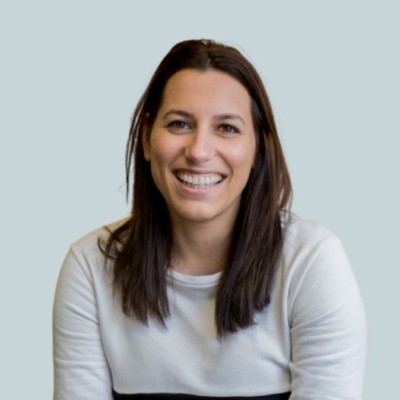Ecodesign for Sustainable Products Regulation (ESPR) & Digital Product Passport (DPP)
Ecodesign Directive, which currently only covers energy-related products, will be expanded to include textiles, and other sectors will follow. This regulation aims to make products more “durable, reliable, reusable, upgradable, reparable, easier to maintain, refurbish and recycle, and energy and resource efficient.”
The regulation also introduces the Digital Product Passport, which will serve as a digital record that provides comprehensive information about a product's environmental footprint throughout its lifecycle.
Every product will have to include a machine-readable passport (such as a QR code) that is linked to a unique product ID. For fashion and textile brands, this can include:
-
The product’s durability, reusability, and repairability
-
Percentage of recycled content
-
The product’s carbon footprint
-
And the product’s circularity, among other requirements
The European Commission will be establishing a dedicated web portal where all digital product passports will be registered.
Read our fashion & textiles DPP deep-dive here.
Green Claims Directive
With the European Commission now expected to withdraw the proposed Green Claims Directive – a regulation that would have required companies to substantiate eco-labels and claims using the Product Environmental Footprint (PEF) method – the Unfair Commercial Practices Directive (UCPD) remains the central enforcement tool against greenwashing in the EU.
Read about the updates of the Green Claims Directive for fashion here.
French Eco-Score: Textile Labeling Requirements
The French Eco-Score, now officially renamed “Environmental Cost” (French: Coût Environnemental), is an environmental labeling system for textile and apparel products under France’s Climate and Resilience Law. It is a methodology for assessing and communicating the environmental impacts of textile products, building on life cycle assessment and evaluations of 16 environmental indicators such as carbon emissions, water consumption, and biodiversity impact.
The environmental labeling requirements apply to all producers, importers, and distributors who place textile products on the French market. This also means that non-French companies are included if they market products in France.
The voluntary rollout is expected as early as the second half of 2025. Starting one year after the launch of the Eco-score, third parties (e.g. distributors or apps) will be allowed to calculate scores for the clothing brands using publicly available parameters in case the brands do not label the product themselves.
.png?width=1660&height=964&name=3%20(5).png)
Read our fashion & textiles French Textile Eco-score deep-dive here.
As you can see, even within just the European Union, there is already a myriad of reporting and labeling requirements that demand insight into the entire lifecycle of a product. Learn more about how Carbonfact can help your brand here.
United Kingdom: Legal Requirements for Labelling Textile Products
The UK has adopted the Textile Products (Labelling and Fibre Composition) Regulations. It standardises how fibres are named and how the composition of textile goods must be disclosed to ensure transparency and enable consumers to compare products fairly.
In 2024, UK is introduced new digital labeling laws for textiles, allowing businesses to provide regulatory and manufacturing information online instead of on physical labels. This initiative aims to reduce costs and burdens for businesses, particularly importers, by streamlining the labeling process.
North America: Sustainable Textile Labeling in the USA, Canada, and Mexico
Textile labelling regulations in the USA, Canada, and Mexico are largely focused on fiber composition, size, and country of origin. Environmental and social impact labeling is still evolving.
In the United States, customer still see plenty of “eco-friendly” or “sustainable” hang-tags, yet there is no single federal rule that verifies those claims while the Federal Trade Comission continues to revise its Green Guides (guidelines for environmental marketing claims).
Because there is so much confusion for consumers, companies with clear insight into their carbon footprint can leverage this information to their advantage.
To fill this federal gap, a patchwork of state-level laws is beginning to tackle labeling. Here are a few examples:
California
- SB 343 (2021), the “Truth in Recycling” law, will prohibit the use of the chasing-arrows symbol or any recyclability claim on packaging unless the material is actually recycled in-state. The ban begins for products manufactured after 4 October 2026.
- AB 1305 (2023), the Voluntary Carbon Market Disclosures Act, has required (since 1 January 2024) that any fashion brand selling carbon offsets or marketing itself as “carbon-neutral/net-zero” in California post online detailed granular data for every individual carbon-offset project you sell or rely on when you claim to be “carbon-neutral” or “net-zero.”
Washington
- The 2022 Plastic Product Degradability Law (fully effective 1 January 2024) bans the terms “biodegradable,” “oxo-degradable,” or similar on plastic items unless they meet compostability standards and are clearly labelled “compostable”.
Brands should monitor state-level laws and prepare to align them with eventual federal guidance.
In Canada, environmental claims that raise issues under the Competition Act, the Consumer Packaging and Labeling Act, and the Textile Labeling Act are investigated by the Competition Bureau. In 2025, it published the final Environmental-Claims Guideline, implementing new “greenwashing” provisions. Any sustainability claim (including carbon-footprint labels) now needs proper substantiation or risk penalties.
Asia: Sustainable Textiles Labelling & Voluntary Ecolabels
While Environmental labels are not currently mandatory in most Asian countries, there are over 40 voluntary “ecolabels” available.
In addition to country-specific labels like Japan's Eco Mark and South Korea’s Green Certification, international programs such as Certified Wildlife Friendly®, Fairtrade, Global Green Tag are in use. These labels typically require adherence to rigorous environmental criteria, including responsible material sourcing, energy-efficient production methods, and reduced chemical usage.
Australia & New Zealand: Moving toward sustainability and circularity
As the world’s second largest consumer of textiles (behind the USA), Australia is working toward ending fast-fashion and improving circularity in the industry. There are currently no environmental labeling requirements, however, the Australian Fashion Council recently launched a national stewardship scheme called Seamless. The program aims to achieve circularity by 2030 and reduce 200,000 tons of clothing waste per year. As their efforts evolve, we’ll report on how fashion brands can implement carbon management tools to stay compliant in Australia.
In addition to the above, both Australia and New Zealand have voluntary ecolabeling programs such as Australia Made, Australia Grown, and Environmental Choice New Zealand.
How Carbonfact Can Help Brands Navigate Sustainable Textiles Labeling Laws
Complying with both mandatory and voluntary environmental labels in a global marketplace is complex. Brands need accurate, up-to-date insights into the complete lifecycle of their product lines. Carbonfact is the only fashion-specific carbon footprint and lifecycle assessment tool that enables brands to actively measure and reduce their environmental footprint.
Get in touch with our team of climate scientists to learn how we can support your business in this evolving landscape.











 Martin Daniel
Martin Daniel

 Lidia Lüttin
Lidia Lüttin
